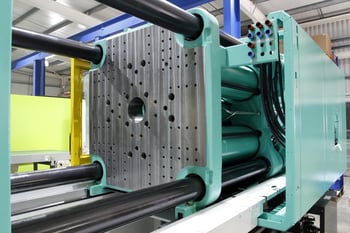Molding the Future: Innovative Uses of Plastic Molds You Didn't Know About
In a world increasingly driven by innovation and efficiency, the importance of molds for plastic cannot be overstated. These versatile tools have long been the backbone of manufacturing, enabling the production of everything from everyday household items to intricate components used in cutting-edge technology. What many people may not realize, however, is just how far the applications of plastic molds have evolved. They have transcended their traditional roles and have begun to play a significant role in diverse fields, inspiring creativity and sustainability in their wake.
From the automotive industry to healthcare, mold technology is paving the way for groundbreaking solutions and products. As designers and engineers continue to push the boundaries of what is possible, molds for plastic have become a vehicle for transformation, allowing for the creation of forms and functions that were once only dreamed of. In this article, we will explore some innovative and lesser-known uses of plastic molds that are shaping the future, revealing how this essential tool is fostering advancements and possibilities we may never have imagined.

Revolutionary Applications in Medicine
The use of molds for plastic has transformed the medical industry by enabling the creation of customized devices and tools tailored to specific patient needs. This innovation allows for the production of prosthetics that precisely fit an individual's anatomy, enhancing comfort and functionality. By using advanced molding techniques, manufacturers can design lightweight and durable prosthetic limbs that improve mobility and quality of life for amputees.
Another significant application is in the realm of surgical instruments. Molds for plastic are employed to produce specialized tools that assist surgeons during intricate procedures. These instruments are often designed to be single-use, reducing the risk of infection and ensuring that each tool meets stringent hygiene standards. Moreover, the ability to rapidly prototype and produce these instruments allows for continuous improvement based on real-world feedback from medical professionals.
In addition to prosthetics and surgical instruments, molds for plastic are increasingly used in the production of medical devices such as inhalers and drug delivery systems. These devices benefit from custom molds that optimize airflow and medication delivery, ultimately improving patient outcomes. The flexibility and versatility of plastic molding technology facilitate innovations that address specific health challenges, ensuring that the medical field continuously evolves to meet patient needs more effectively.
Sustainable Manufacturing Practices
Sustainability in manufacturing has become a crucial focus, especially in the realm of plastic production. Innovative uses of molds for plastic are leading to more eco-friendly practices, such as the incorporation of recycled materials. By utilizing molds designed for specific recycling processes, manufacturers can create products from post-consumer plastics, reducing waste and lowering the carbon footprint associated with new plastic production. This not only conserves resources but also encourages a circular economy, where materials are reused and repurposed.
Energy-efficient molding techniques are also emerging, helping to minimize energy consumption during production. Advanced molds are being designed to optimize heating and cooling cycles, which can significantly reduce the overall energy required for plastic forming. Techniques such as multi-cavity molds allow for higher output with less energy per unit, contributing to quieter and more sustainable manufacturing environments. These innovations not only enhance productivity but also align with global goals for reducing environmental impact.
Furthermore, the use of biodegradable plastics in conjunction with innovative molds enhances the sustainability narrative. Manufacturers are beginning to explore molds that support the production of compostable materials, paving the way for products that break down naturally over time. This shift not only alleviates some of the concerns surrounding plastic waste but also appeals to consumers who are increasingly prioritizing sustainable options. The combination of innovative mold design and eco-conscious materials sets the stage for a more sustainable future in plastic manufacturing.
Creative Uses in Art and Design
Molds for plastic have transcended traditional manufacturing, finding a prominent place in the world of art and design. Artists are increasingly leveraging these molds to create intricate sculptures and installations that capture the imagination. By using plastic molding techniques, creators can produce detailed artworks with repeatable precision, allowing for a wider dissemination of their unique designs. This approach enhances the accessibility of original art pieces while also pushing the boundaries of creativity.
In the realm of product design, molds for plastic are instrumental in developing innovative and functional items that reflect artistic vision. Designers utilize molds to craft aesthetically pleasing everyday objects, from furniture to home decor. By experimenting with different types of plastics and mold shapes, they can explore textures, colors, and forms that elevate the user experience. This fusion of art and functionality not only captivates consumers but also encourages a modern, sustainable approach to design.
Moreover, educational institutions are incorporating plastic molding techniques into their art curricula. Students engage with molds to learn about design principles and material properties while fostering their creativity. This hands-on experience allows them to explore how molds can transform simple designs into sophisticated artworks. As a result, the next generation of artists and designers is empowered to innovate and redefine the boundaries of what can be created with molds for plastic.